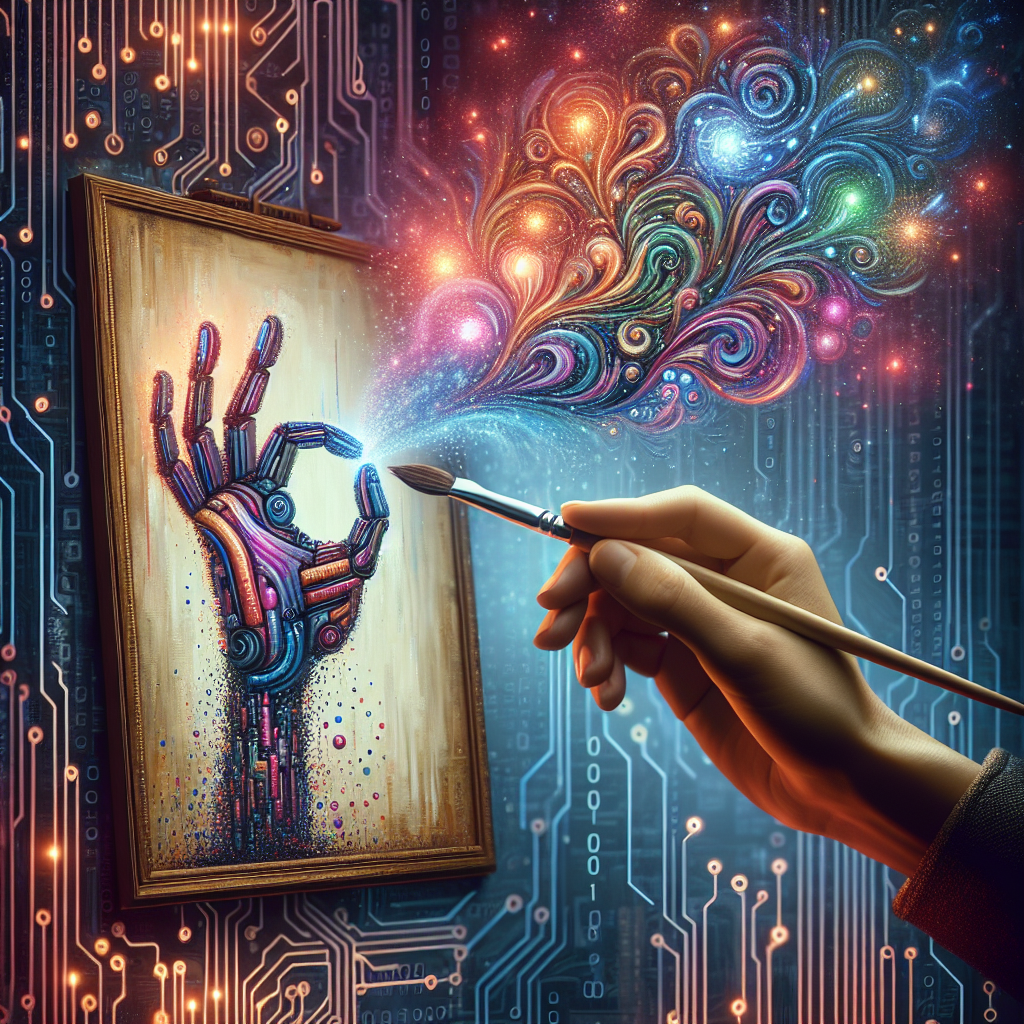Artificial intelligence has come a long way in recent years, not only in terms of technological advancements but also in its ability to create art. AI-driven art has become a popular topic in the art world, with many artists using AI algorithms to create unique and innovative pieces of art. But what exactly is AI-driven art, and how does it differ from traditional art forms?
Exploring the Aesthetics of AI-Driven Art
AI-driven art, also known as generative art, refers to artworks that have been created or influenced by artificial intelligence algorithms. These algorithms are programmed to generate art based on a set of rules, data inputs, or pre-existing examples. The resulting artworks can range from paintings and sculptures to music and literature, and can be created using a variety of AI techniques, such as neural networks, deep learning, and machine learning.
One of the key differences between AI-driven art and traditional art forms is the role of the artist. In traditional art, the artist is the sole creator of the artwork, using their skills, creativity, and imagination to bring their vision to life. In AI-driven art, the artist acts more as a facilitator or curator, providing the algorithms with the necessary inputs and parameters to generate the artwork. The AI algorithms then take over, creating art based on their programming and the data they have been trained on.
This shift in the role of the artist has led to some debate in the art world about the authenticity and value of AI-driven art. Some critics argue that AI-driven art lacks the emotional depth, intentionality, and skill that traditional art possesses, while others believe that AI-driven art has the potential to push the boundaries of creativity and innovation in ways that traditional art cannot.
One of the key advantages of AI-driven art is its ability to generate art at a scale and speed that would be impossible for a human artist to achieve. AI algorithms can process vast amounts of data and generate thousands of variations of an artwork in a fraction of the time it would take a human artist. This has led to a new era of art production, where artists can create and experiment with new ideas and styles at a rapid pace, leading to a greater diversity and richness in the art world.
Another advantage of AI-driven art is its ability to create art that is truly unique and innovative. AI algorithms can generate artworks that push the boundaries of traditional art forms, exploring new concepts, styles, and techniques that would be difficult for a human artist to imagine or execute. This has led to the creation of some truly groundbreaking and thought-provoking artworks that challenge our perceptions of art and creativity.
However, AI-driven art also raises some ethical and philosophical questions about the role of the artist, the nature of creativity, and the impact of technology on art and society. Some critics argue that AI-driven art is a form of “artificial creativity” that lacks the authenticity and humanity of traditional art, while others believe that AI-driven art has the potential to democratize art, making it more accessible and inclusive to a wider audience.
FAQs:
Q: Can AI algorithms truly be considered artists?
A: While AI algorithms can generate art, they do not possess consciousness, intentionality, or emotion in the same way that human artists do. Therefore, it is debatable whether AI algorithms can be considered artists in the traditional sense. However, they can be seen as tools or collaborators that work in conjunction with human artists to create art.
Q: How do AI algorithms generate art?
A: AI algorithms generate art by processing data inputs and following a set of rules or parameters that have been programmed into them. These rules can be based on patterns, styles, or techniques that the algorithms have been trained on. The algorithms then use this information to generate new artworks that are influenced by the data inputs and the programming.
Q: What is the future of AI-driven art?
A: The future of AI-driven art is likely to be shaped by advancements in AI technology, as well as the evolving relationship between human artists and AI algorithms. It is possible that AI-driven art will become more integrated into the art world, with artists using AI algorithms as tools to enhance their creativity and explore new artistic possibilities. Additionally, AI-driven art may also lead to new forms of art that challenge our perceptions of creativity, authorship, and authenticity.
In conclusion, AI-driven art represents a new frontier in the art world, where technology and creativity intersect to create innovative and unique artworks. While AI-driven art may raise some ethical and philosophical questions, it also has the potential to push the boundaries of art and expand our understanding of creativity. As AI technology continues to advance, it will be interesting to see how AI-driven art evolves and shapes the future of the art world.

